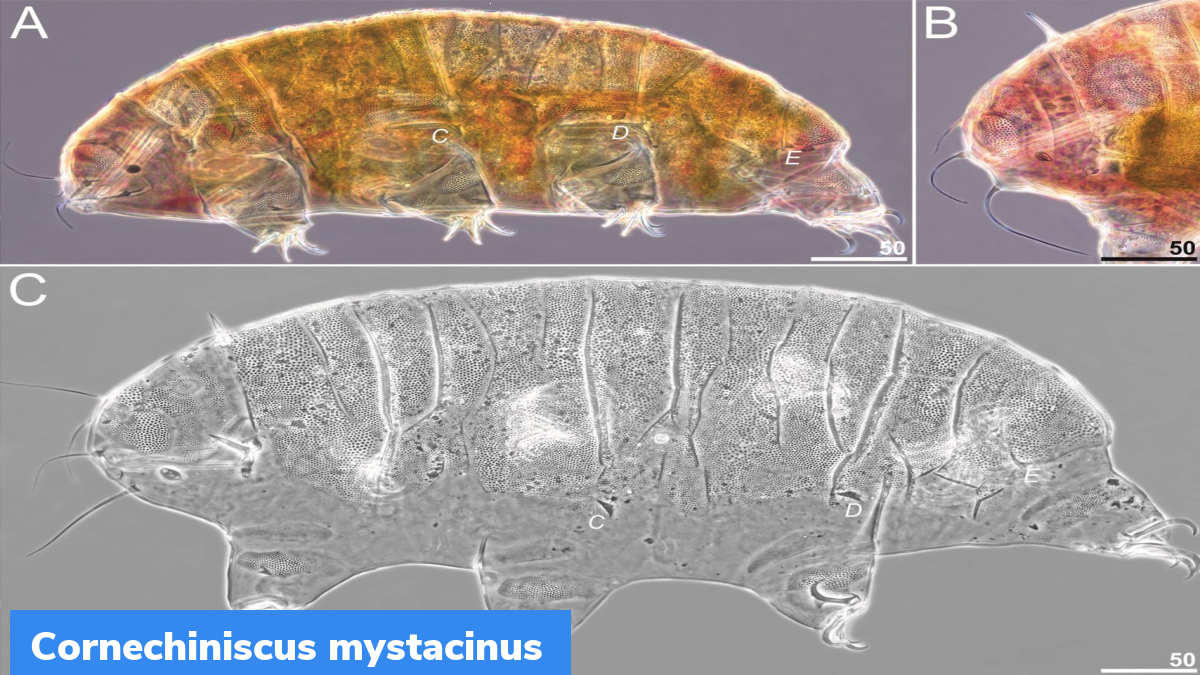Cornechiniscus mystacinus: New Tardigrade Species in Kyrgyzstan
Recently, a study was conducted on new specimens of Cornechiniscus, found from Kyrgyzstan, Argentina and Italy.
About Tardigrades
Tardigrades were first discovered in 1773. They are a diverse group of microscopic invertebrates. They are best known for their capability to survive in extreme conditions. The species is also called as water bears or moss piglets. The maximum age of the species can be 60 years. They grow up to a maximum size of 0.5 mm.
Survival of Tardigrades
Tardigrades can survive for up to 30 years, without food or water. They can also survive for a few minutes at temperatures below minus 272 degrees Celsius or even at 150 degrees Celsius. At minus 20 degrees Celsius, they can survive for decades. They are resistant to pressures from 0 atm in space to 1200 atm in Mariana Trench. They can also withstand the radiation levels up to 5,000-6,200 Gy.
About Cornechiniscus
It is an emblematic genus of large-bodied tardigrades. They are more than 0.3 mm in length. Members of emblematic genus usually inhabit mosses and lichens with large amounts of dusty soils. They are exposed to frequent and long drought. The species are found across all continents, except Antarctica and Australasia.
About Cornechiniscus Mystacinus
In the recent study, it was found that, one tardigrade represented a previously undiscovered species, called Cornechiniscus Mystacinus. It is the eleventh species of the genus. The species are commonly found in mountains of Tashkomur in Jalalabat region of northern Kyrgyzstan. It is found in yellow to dark orange colour. The species has a plump body; large, round & black crystalline eyes; smooth claws besides a long peribuccal cirri.
Month: Current Affairs - July, 2022
Category: Science & Technology Current Affairs


